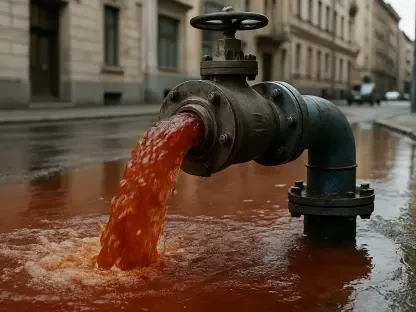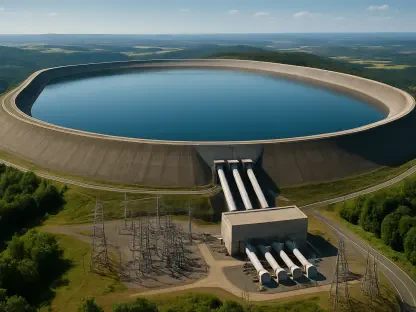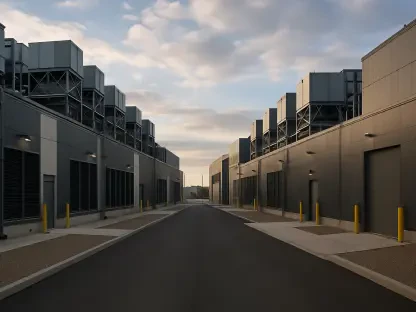The Charlottetown water utility has embarked on an ambitious initiative to implement a wellfield protection plan aimed at safeguarding the city’s water supply from potential contamination risks. The proposed plan outlines a series of measures designed to mitigate these risks, with a particular focus on purchasing at-risk parcels of land. This initiative highlights the current challenges faced by the water utility and brings to light the varying perspectives of the involved stakeholders.
Importance of Water Security
The urgency of securing clean and safe drinking water for Charlottetown’s future generations has been a driving force behind the water and sewer utility committee’s efforts. As the entire province relies heavily on groundwater, the significance of this initiative cannot be overstated. Protecting the city’s wellfields, which are crucial for maintaining a reliable water supply, has become a top priority.
The primary concern in this endeavor is the risk of contamination from nearby agricultural and industrial activities. Pesticides and petroleum products pose significant threats to the wellfields, making it imperative to adopt comprehensive measures. The wellfield protection plan specifically identifies areas that are most vulnerable to pollution, ensuring that proactive steps are taken to safeguard the water supply.
Mapping the Wellfields and Identifying Risk Zones
In detailing the wellfield protection plan, four wellfields drawing from two watersheds north of the city have been identified. These wellfields are strategically located outside the city boundaries and are surrounded predominantly by farmland, which underscores their vulnerability to pollution from surrounding land uses. This geographical placement accentuates the need for vigilant protection efforts.
The plan further delineates three distinct risk zones, each mapped out to gauge potential contamination timelines: 200-day, 5-year, and 20-year intervals. This structured approach provides a clear perspective on the threats that could emerge over time, allowing for targeted interventions. By identifying these risk zones, the plan ensures a comprehensive understanding of how to best protect the city’s water resources from long-term contamination.
Land Purchase Recommendation
A cornerstone of the wellfield protection plan is the recommendation for Charlottetown to purchase at-risk parcels of land as they become available. This proactive approach aims to control land use around the wellfields, thereby minimizing the risks posed by industrial spills and other contaminants. The idea of acquiring these lands at a fair market value underscores the committee’s commitment to fiscal responsibility while prioritizing public health.
Joshua McInnis, the water and sewer utility manager, stressed the importance of being financially prudent in these land acquisitions. He emphasized that owning such critical parcels could dramatically reduce the likelihood of contamination, providing a long-term safeguard for the city’s water supply. However, some committee members have voiced concerns regarding delays in moving forward with these purchases, indicating a need for swifter action.
Addressing Delays and Financial Considerations
Given the urgent nature of securing the city’s water supply, committee members such as Councillor Justin Muttart and chair Bob Doiron have strongly advocated for purchasing key land parcels. They contend that protecting the water supply represents an investment in the city’s future, even if it requires paying a premium for strategically important parcels. Doiron likened this to having to pay more for a vital building when necessary.
Muttart expressed frustration that, despite serving on the council for over two years, no land purchase proposals have yet been brought to a vote. This delay has prompted calls for more immediate action to protect Charlottetown’s essential water resources. Both Muttart and Doiron believe that decisive steps must be taken promptly to ensure the city’s water supply remains uncontaminated.
Exploring Alternative Solutions
While not opposing the notion of purchasing at-risk land, Mayor Philip Brown has suggested exploring alternative solutions as well. One proposal involves the province imposing a moratorium on agricultural spraying around the wellfields. By restricting such practices, the risk to the wells could be significantly diminished without necessitating extensive land purchases.
Mayor Brown also highlighted the city’s proactive measures in monitoring spills to ensure rapid response times. Nonetheless, committee members like Muttart have argued that monitoring, while crucial, remains a reactive measure. They assert that preemptive actions, such as land acquisitions and agricultural restrictions, are essential to securing long-term water safety.
Consensus on Proactive Measures
The Charlottetown water utility has initiated an ambitious project to develop a wellfield protection plan in order to safeguard the city’s water supply from potential contamination. This proposed plan includes a range of measures designed to minimize these risks. One significant emphasis is on the acquisition of parcels of land that are deemed at risk. This initiative underscores the present challenges that the water utility is facing and sheds light on the diverse perspectives of the stakeholders involved. The plan aims to address contamination threats comprehensively, ensuring the long-term purity and safety of the water supply. These measures involve proactive steps to secure land around wellfields, necessitating collaboration among city officials, landowners, and environmental experts. The effort demonstrates a commitment to public health and environmental sustainability, reflecting a broad consensus on the importance of protecting such a vital resource. Overall, this protection plan is pivotal in fostering a safe and reliable water supply for the residents of Charlottetown.









